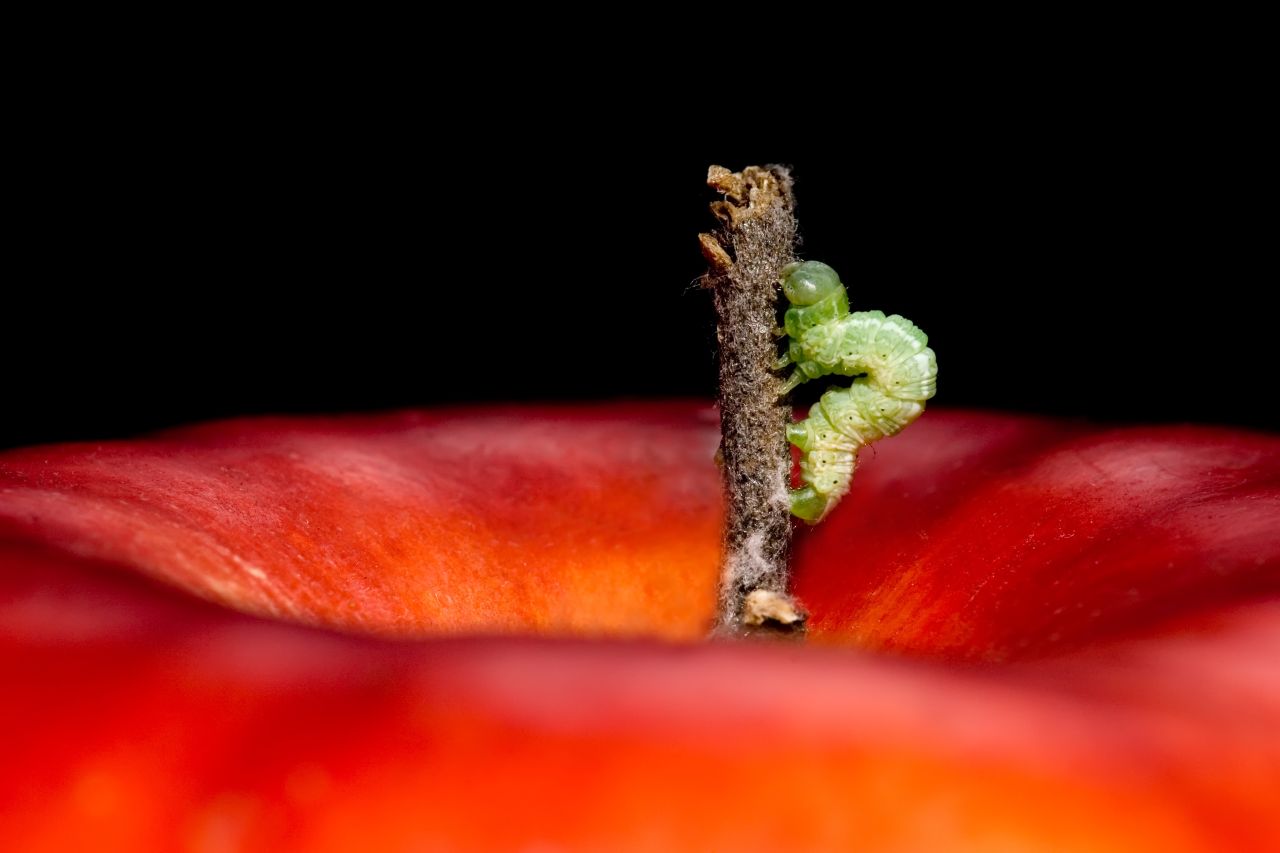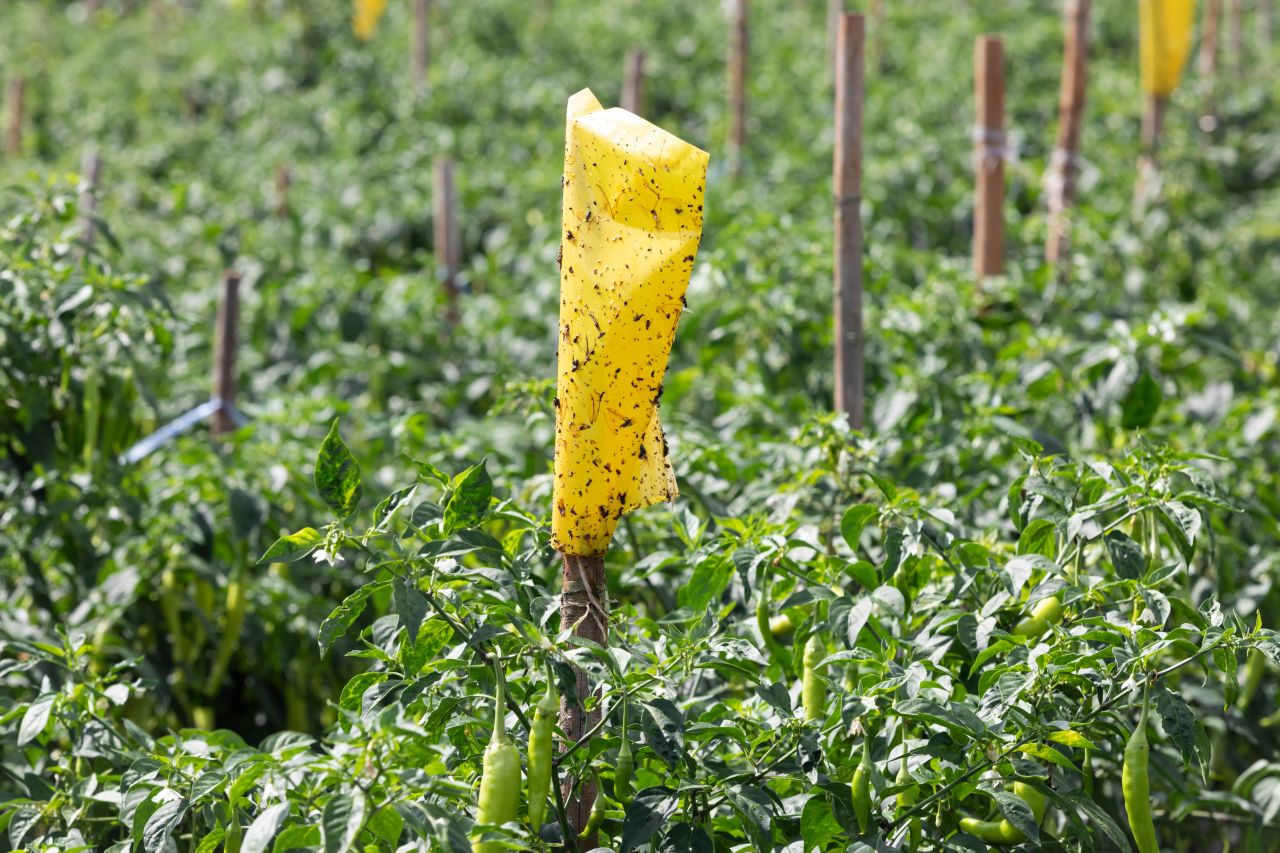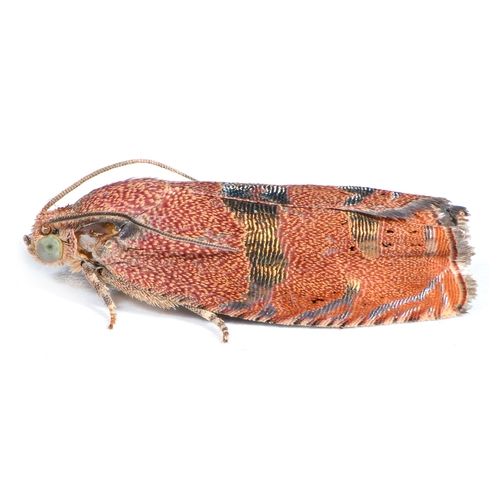The Integrated Pest Management Toolbox
Are pests damaging your plants or showing up in your food? Integrated Pest Management (IPM) combines different strategies—including pesticides when needed—for a smarter, balanced approach to protecting crops and gardens.

A caterpillar species walking on an apple stem. Image: Adobe Stock
Many of us deal with insect pests in our gardens – the roses become overrun with aphids, a caterpillar devours our tomato plants. Even those of us who don’t garden may experience biting into an apple with a caterpillar curled up cozily in its tunnel. Growers who manage crops know that we don’t enjoy eating apples with worms, and gardeners do not like feeding the aphids or losing tomato plants to caterpillars, and so sometimes pests need to be managed.
Growers and homeowners can control pests responsibly by using something called Integrated Pest Management (IPM). This type of management system uses a variety of methods to control pests. IPM can be thought of as a toolbox, with the tools representing the various methods you can use for controlling pests. You wouldn’t be able to fix your car with a single screwdriver, and this is also true for controlling pests and growing healthy crops – you can’t just throw a pesticide on your crop and expect good results.
Do I need to control pests in my garden?
The first tool in your IPM toolbox is monitoring for a pest. Someone can monitor for a pest by checking their plants for feeding damage or the insect itself. Some growers even use drones to monitor plant health by detecting for example, color differences. If the area is large, growers will often set up insect traps, which usually have a bait that attracts the pest by its odor, or they are of a certain color and/or shape that the insect finds appealing. These traps will draw pests in from a larger area and reduce the amount of time needed to scout for them. Many common pests have what are called action thresholds. An action threshold is the pest population level at which control measures are needed to prevent economic crop damage. This makes it much easier for the grower to decide whether or not they need to control a pest based on the pest type, crop, and environmental conditions. After hitting an action threshold, it economically makes sense to control the pest because not doing so will result in a loss in crop, and therefore income.

Yellow sticky insect pads are used in a pepper field. Image: Adobe Stock
Pesticides are also tools in our IPM toolbox and their use is strictly regulated to ensure safety for humans and the environment. It is extremely important to follow labels on pesticide containers, because they describe how to safely mix and apply the products, and also what needs to be done if an accident happens. Wearing the proper safety equipment is essential! Labels also tell applicators when it is safe to enter the treated area and when crops can be harvested.
Control tools without pesticides
There is a whole slew of other tools that can be used to control pests that do not involve pesticides. Cultural controls avoid pesticides by using practices in the field that will disrupt pests, or remove their habitat, making it more challenging for them to survive. For example, one of the major pests in blueberries and raspberries in the U.S. is an invasive fruit fly called Spotted Wing Drosophila, which attacks fruit that is just starting to ripen but also does extremely well on overly ripe fruit. Growers who pick fruit when it becomes ripe and remove all overly ripe fruit can greatly reduce the number of flies in their fields. Another example can be found in hazelnut orchards in the U.S. One of the main insect pests of this crop is filbertworm, which feeds on the nuts. The first nuts that drop to the ground right before harvest are often infested with worms, so growers will drive through the orchard and flail (mow) very low to the ground, thereby chopping up the nuts with the larvae.

Filbertmoth, Cydia latiferreana, a major pest of hazelnut orchards in the Pacific Northwest in the USA. Image: iNaturalist/Scott M Logan, CC License
Joining forces with arthropods
We also have tons of beneficial arthropods in our gardens and farms, so attracting and conserving these populations is extremely important for pest control. Providing these critters with habitat is very helpful. For example, installing flowering plants that provide food and habitat will help beneficial arthropod populations. For homeowners, watering plants early in the morning and providing insects with a small dish of water that has pebbles that they can walk on are great ways to give them a little water, especially during the hot summer months. There are plenty of carnivorous beetles out there, and beetle banks, which consist of piles of mulch or woodchips, are fantastic ways of providing habitat for these insects.
A parasitic wasp preying on aphids—an advanced example of biocontrol. © Patricia Sanches
Don’t like maintaining a perfectly manicured yard? Well, you’re in luck because keeping it a bit shaggy and overgrown helps provide extra habitat for beneficial insects, and other wildlife including snakes and birds that can also assist with pest control. In the U.S., we have something called “No Mow May” where we allow our lawns to grow all during the month of May, thereby allowing flowers to bloom and provide extra habitat for beneficial insects. Of course, if pesticides need to be used, applying the most selective pesticide specific to your pest is ideal, and then definitely following the label is the best way to limit the exposure to non-target organisms. You don’t want to poison the wildlife or your pets!
So, as you can see, there are plenty of tools in our IPM toolbox that can be used to maintain a balance in our gardens and crops. By maintaining this balance of beneficial arthropods and only applying pesticides if necessary, we can grow healthy food that is nourishing to our bodies and also limits our impact on the environment.
You can find information on integrated pest management in Switzerland on the website of the Ministry of Agriculture (in German).
